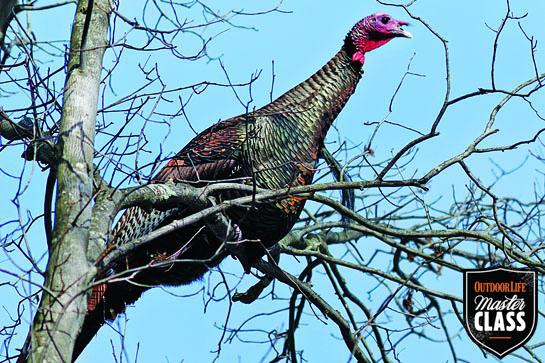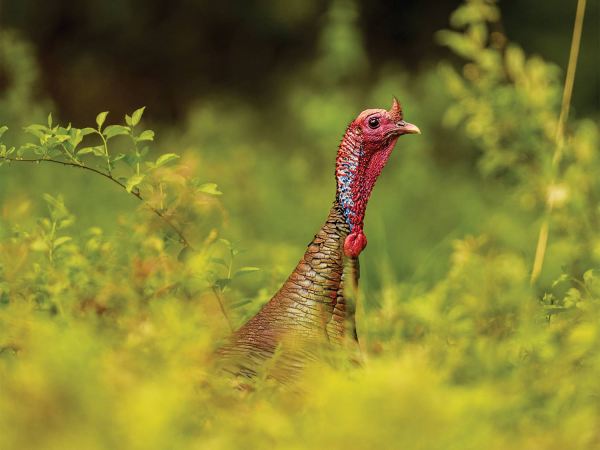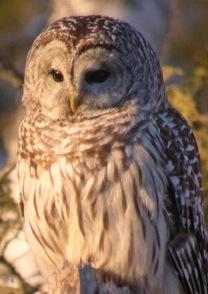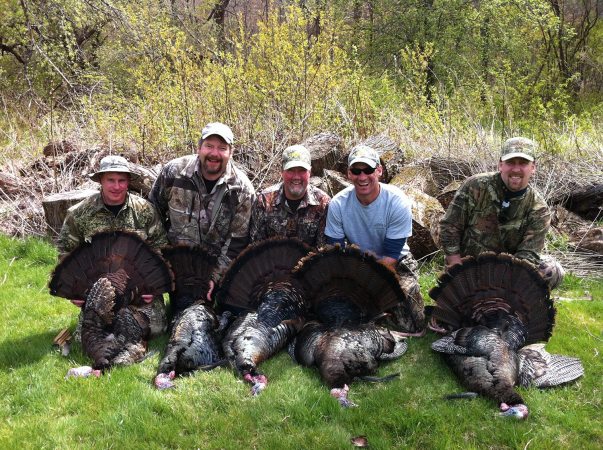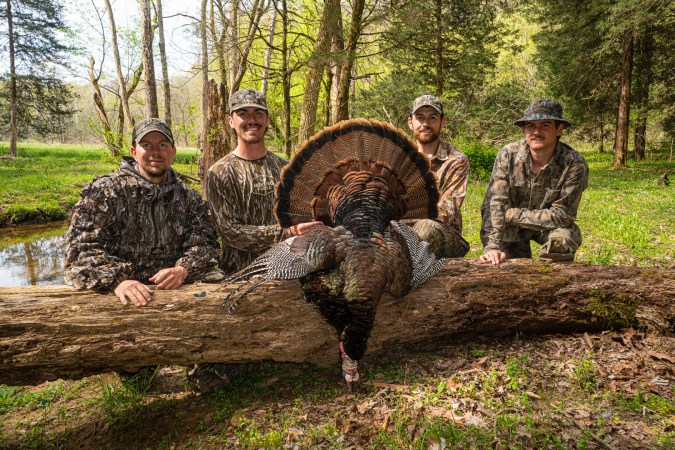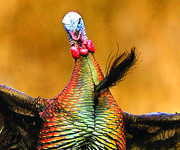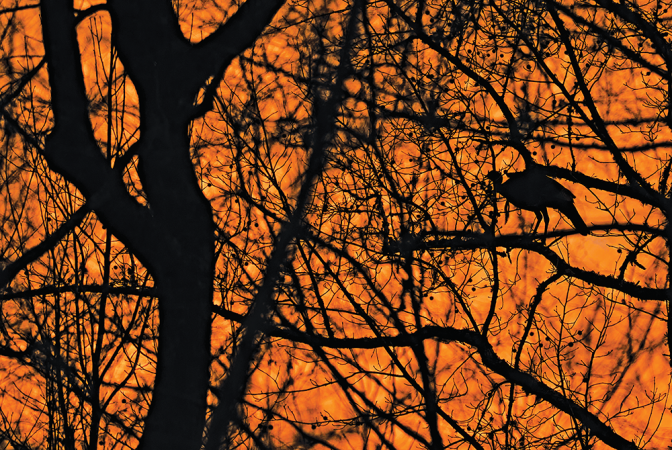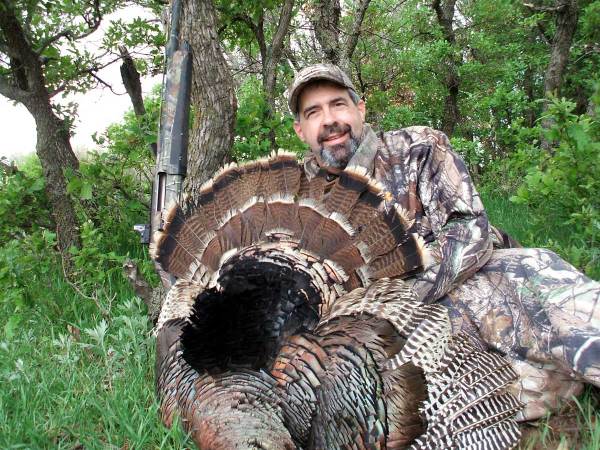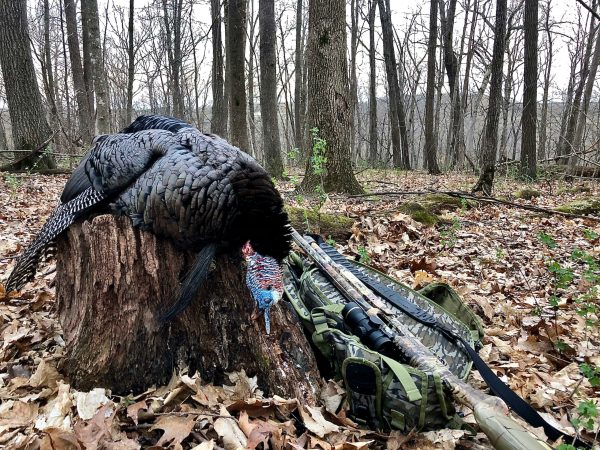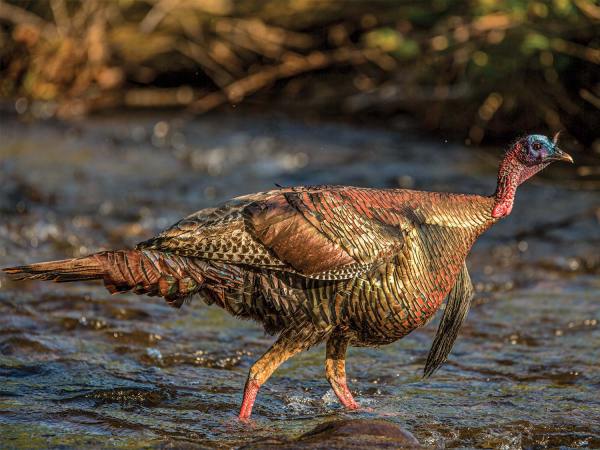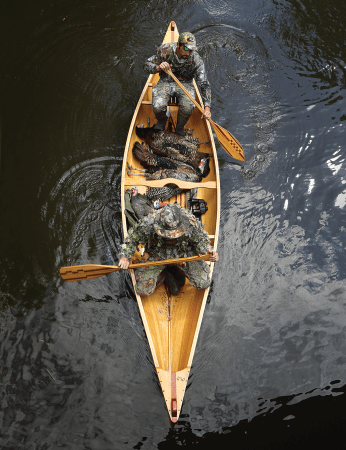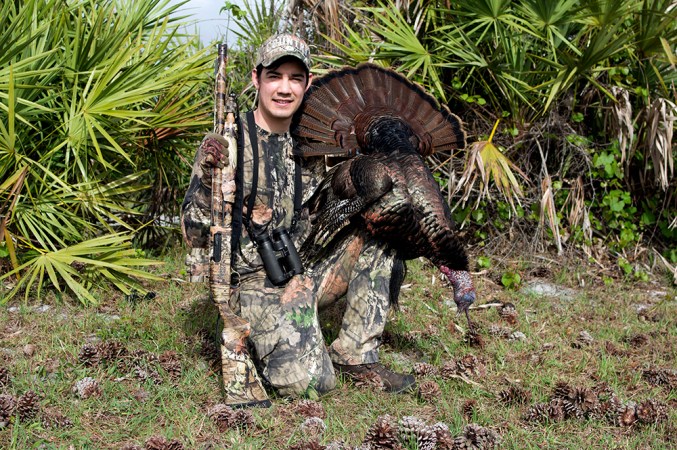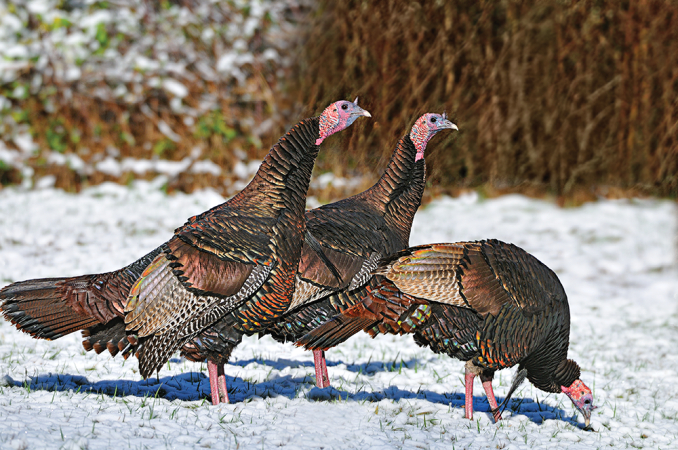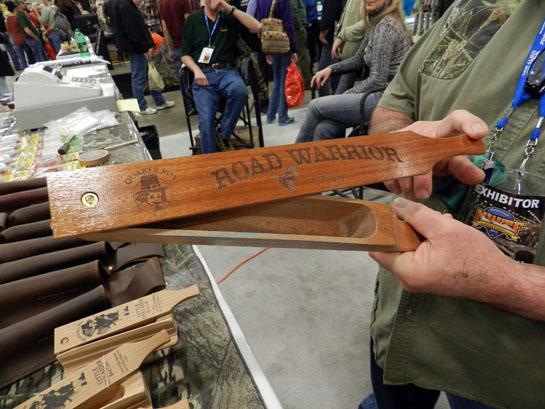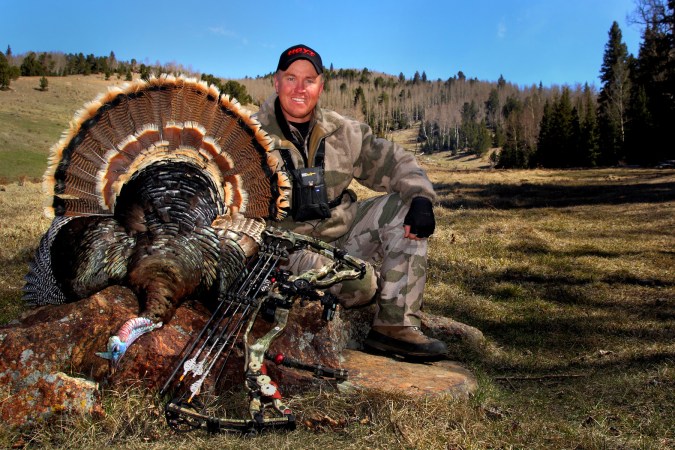The old-school drill goes: “Set up 100 to 200 yards from a roosted gobbler, then work that bird.” But sometimes it pays to get full-choke tight to the birds. Here’s how.
1. X Marks the Spot
When scouting, don’t simply make a bird gobble and then head to the next spot. Spend time with a gobbler and the flock this bird struts with. Watch and listen to what they do and where they’re heading as you scout to find out precisely where they roost. Quietly make your pre-dawn setup in that exact spot.
2. Sit With Birds
Slip in ultra-early to a known roost–an hour before flydown, if necessary–and don’t move. If you call at all, do it with a hands-free mouth call. For added realism, stake a decoy or two near your position and in range. As the birds fly down and regroup, a gobbler may move in.
3. Make It 50
Cut the old-school minimum distance in half. Set up so there’s a chance that the birds will land in your lap when they fly down. This works best with unpressured, patterned gobblers in groups; in rainy, windy conditions; and when you can use topography to your advantage.
4. How To Hoot
When it comes to locating roosted birds, not all owl hoots are created equal. It’s always best to start with a great horned owl hoot. If a tom gobbles at a soft great horned owl imitation, you’ll know that he’s close. If you get no response, switch to the louder barred owl hoot.
5. Bust ‘Em Up
Yep, just like you would do in the fall. Turkeys are turkeys. They want to be together, and you can kill a gobbler by moving him in another direction if you first know his roosting limb. For the intentional scatter, it’s best to make your move once birds have flown to roost in the evening. This gives the birds all night to settle down. Watch where the gobbler flies. Get between him and his hens before daybreak, and go a bit easier on the calling.
6. Sleep With the Birds
Have you located turkeys in wilderness country? Pitch a tent within earshot of their roost. If your morning setup is miles from the nearest road, you’ll have these gobblers to yourself.
7. Fake a Flock
Surround your setup with multiple decoys. Use tree calls, flydown cackles, clucking, lost calling, and straight yelping to pull in a group of turkeys you’ve roosted. Curiosity kills turkeys too. A boss hen might investigate and pull a gobbler in with her. A subordinate longbeard might break from the roosted group and slip in.
8. Send a Friend Request
You’ve set up in one place. The turkeys fly down and drift the other way. The next morning you set up where they had gone. The birds fly down and go to where you were the day before. Frustrating, eh? Solution: Put a buddy in one location and claim the other spot. Two can play this game. Double-teaming fills tags too.
9. Get High
Spring gobblers often prefer to enter fields at the highest point of an open pasture, often following hens to strut zones. Make your morning setup along the roost and a high-point strut zone, inside concealing edge cover and with shooting lanes.
10. Muffle Your Locator
Most locator calls, like crowing or howling, are loud to elicit shock gobbles from distant birds. But if you’re looking to get tighter to a roost, it’s best to leave the more raucous calls–crow, hawk, and pileated woodpecker–in your vest. Save them for striking birds during the day.
11. Use a Mouth Call
Hands-free mouth diaphragm calls are the best choice for tight setups, where turkeys might see the hand movement required for friction calls. Use hand-operated calls only if unseen roosted birds can hear your clucks and yelps but not see you moving.
12. Shut Up
When sharing hunts with buddies, there’s a tendency to talk too much. Two words: Shut up. Slip silently into your extreme setup position in the dark. If you must talk, whisper. But if that’s not working, hunt alone. Talk all you want back at camp. Also be sure to turn off your cell phone. Even vibrate mode is too loud on dead-calm mornings.
13. Float It
Prospecting for turkeys in flooded country? Throw a canoe or kayak on your truck and navigate swollen waters to birds. Use locator calls to contact gobblers over watery roosts. Then pick your dry land setup. Sometimes you’ll hunt unpressured turkeys that no one else has gotten close to due to access issues.
14. Use Satellites
Take your GPS with you when you roost birds. Get as close as you dare without spooking the tom. Try to pick out the exact location for your setup the next morning and mark it as a waypoint. Slink in long before first light. Remember that first light comes earlier near fields than in timber.
15. Face a Flush
If you have unintentionally separated a gobbler from the flock, use this to your advantage. Get between the tom and his girlfriends, let the woods calm down a bit, and begin with some soft slate calling. Don’t step up the volume until he gobbles.
